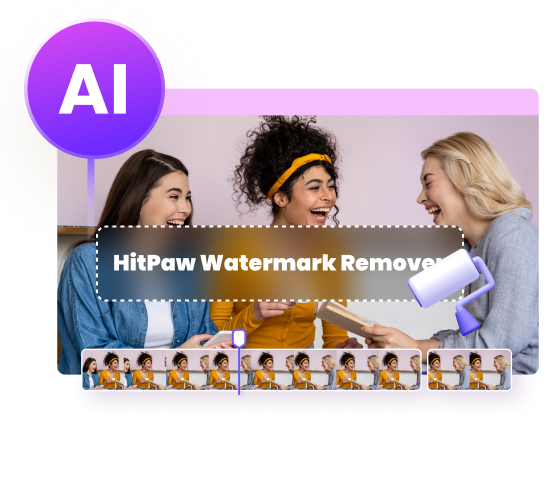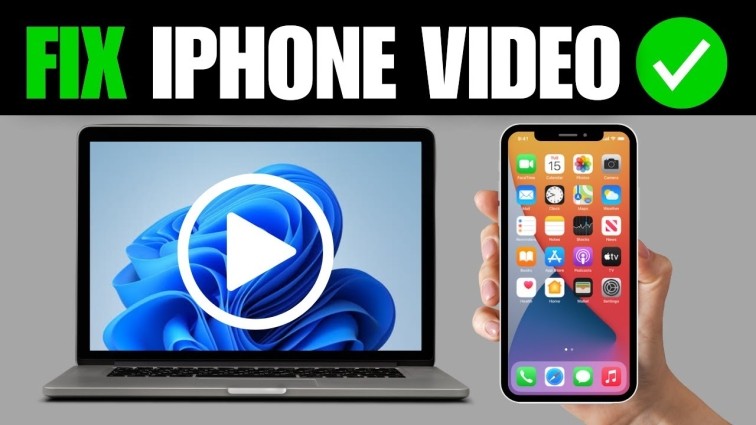The Legal Use of Watermark Remover Tools
In today's digital world, watermark remover tools have become increasingly popular. Whether you're editing old family videos, redesigning media content, or creating educational materials, the ability to remove watermarks can be highly useful.
However, as watermark removers like HitPaw Watermark Remover become more accessible, so does the risk of misuse. The goal of this article is to help users understand the legal boundaries of removing watermarks, explore fair use situations, and avoid copyright infringement.
Part 1. What Is a Watermark and Why Is It Used?
Watermarks are visual markers-such as logos, text overlays, or semi-transparent graphics-placed on images or videos to signal ownership, prevent unauthorized use, or promote a brand.
Common purposes include:
- Copyright protection
- Brand attribution
- Discouraging piracy or theft
Types of watermarks:
- Visible overlays (e.g., logos on stock photos)
- Transparent graphics embedded in the corner
- Text-based copyright notices
These markings serve as a digital signature, and in many cases, removing them without authorization can lead to legal consequences.
Part 2. Legal Use Cases for Removing Watermarks
Scenario 1: Personal Content Ownership
Removing watermarks is legal and ethical when applied to your own content. This includes:
- A photographer removing a draft watermark from their own images.
- An individual restoring old family photos or videos that contain automatic timestamps or unwanted software-generated marks.
Note: For family content or legacy media, non-commercial use is critical.
Scenario 2: Public Domain / Creative Commons Materials
Some materials are published under licenses that explicitly allow modification, such as:
- Creative Commons (CC-BY or CC0) content that allows adaptation (with or without attribution).
- Government-produced documents or videos released into the public domain (e.g., NASA imagery).
Always verify licensing terms and retain attribution if required.
Scenario 3: Fair Use Transformative Work
Under the Fair Use Doctrine, removing a watermark may be acceptable when:
- Creating educational presentations
- Making commentary or reviews
- Using a small quoted segment from a larger work in a way that transforms the content's meaning
However, this is a gray area. Factors like purpose, amount used, and market impact all affect fair use legitimacy.
Scenario 4: Mistaken Watermarks
In some cases, content may be watermarked by mistake-such as:
- Auto-generated tags on user-uploaded platforms (e.g., social media apps)
- Errors from editing software that misapply watermarks
If you own the content or have proof of permission, removing these marks is typically acceptable.
Part 3. When Removing Watermarks Becomes Illegal or Infringes Copyright
1: Commercial Exploitation
Illegal scenarios include:
- Removing watermarks from stock images or videos (e.g., Shutterstock, Adobe Stock) for use in ads, websites, or paid content.
- Using watermark removal in social media marketing to give a false impression of ownership.
This not only breaches copyright but can also result in financial penalties.
2: Plagiarism & False Attribution
Removing watermarks to erase credit from original creators is a serious offense:
- In academic or publishing fields, this is considered plagiarism.
- In creative communities, falsely claiming authorship by watermark removal damages reputations and violates intellectual property law.
3: Platform Policy Violations
Platforms like Adobe, Getty, and Instagram enforce strict TOS:
- Removing watermarks from platform-protected content often results in account suspension or legal claims.
- Instagram uses automated copyright detection systems that flag or remove stolen content, even if the watermark is gone.
Part 4. Compliance Checklist
Use this 4-step compliance guide before removing any watermark:
Step 1: Confirm Copyright Status
Check WHOIS, metadata (EXIF), or source platform to identify the original creator.
Step 2: Obtain Written Authorization
For commercial use, always request written permission or a licensing agreement.
Step 3: Analyze the Four Factors of Fair Use
- Purpose (educational/non-profit vs. commercial)
- Nature of the content (factual vs. artistic)
- Amount used (small excerpt vs. full work)
- Effect on the original's market value
Step 4: Use Royalty-Free Alternatives
Explore stock platforms that offer royalty-free content:
Part 5. Ethical Use of HitPaw Watermark Remover
HitPaw Watermark Remover is a powerful yet easy-to-use tool designed for legal and ethical watermark removal. It's ideal for users who want to enhance or reuse media they own or are licensed to edit, and it fully supports copyright compliance.
Commitment to Legal Use
Every user must agree to the Terms of Service, which clearly state the tool is to be used only for non-infringing, authorized content.
Support for Both Images and Videos
You can remove watermarks from photos (JPG, PNG, BMP, etc.) and videos (MP4, MOV, AVI, etc.) with professional results.
Multiple AI-Based Removal Modes
HitPaw offers several intelligent removal options:
- Smooth Filling - Best for removing small watermarks on simple backgrounds
- Edge Filling - Ideal for content near borders
- Texture Repair - Suited for complex backgrounds and textured images
- AI Model (Video) - Auto-analyzes frames to remove watermarks across entire videos
Built-in Editing Tools
Besides watermark removal, it includes:
- Basic cropping and resizing
- Preview comparison
- Timeline trimming for videos
- Batch processing for photos
How to Remove Watermarks with HitPaw Watermark Remover
Step 1.Download and install HitPaw Watermark Remover to a PC or Mac computer.
Step 2.Upload your image or video to the program. You can click Import button to add files or drag & drop files directly to the program.

Step 3.Select the watermark area using brush, marquee, or lasso tool. Choose a remove mode from Smooth Filling, Edge Filling, or Texture Repair.

Step 4.Click Remove button to start removing and then Preview the result.

Step 5.Click Export to save your new image or video without watermark.

Conclusion
Technology is neutral-it's how we use it that defines right or wrong. Watermark remover tools offer powerful capabilities, but with that power comes responsibility. Use such tools to enhance your creative process ethically, legally, and respectfully. Try HitPaw Watermark Remover to enhance your personal or licensed content creatively and legally.














 HitPaw Univd (Video Converter)
HitPaw Univd (Video Converter) HitPaw VoicePea
HitPaw VoicePea  HitPaw VikPea (Video Enhancer)
HitPaw VikPea (Video Enhancer)



Share this article:
Select the product rating:
Daniel Walker
Editor-in-Chief
This post was written by Editor Daniel Walker whose passion lies in bridging the gap between cutting-edge technology and everyday creativity. The content he created inspires the audience to embrace digital tools confidently.
View all ArticlesLeave a Comment
Create your review for HitPaw articles